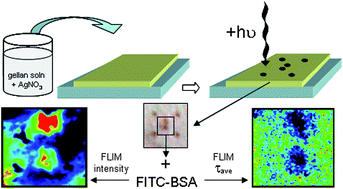In situ formation of silvernanostructures within a polysaccharide film and application as a potential biocompatible fluorescence sensing medium†
Abstract
Simple to manufacture

* Corresponding authors
a
HORIBA Jobin Yvon IBH Ltd, 45 Finnieston Street, Glasgow, UK
E-mail:
graham.hungerford@horiba.com
Fax: +0044-(0)1412296790
Tel: +0044-(0)1412296796
b School of Engineering and Built Environment, Glasgow Caledonian University, Cowcaddens Road, Glasgow, UK
Simple to manufacture

 Please wait while we load your content...
Something went wrong. Try again?
Please wait while we load your content...
Something went wrong. Try again?
G. Hungerford, M. Toury, D. McLoskey, N. Donaldson and A. S. Holmes-Smith, Soft Matter, 2012, 8, 653 DOI: 10.1039/C1SM06813J
To request permission to reproduce material from this article, please go to the Copyright Clearance Center request page.
If you are an author contributing to an RSC publication, you do not need to request permission provided correct acknowledgement is given.
If you are the author of this article, you do not need to request permission to reproduce figures and diagrams provided correct acknowledgement is given. If you want to reproduce the whole article in a third-party publication (excluding your thesis/dissertation for which permission is not required) please go to the Copyright Clearance Center request page.
Read more about how to correctly acknowledge RSC content.
 Fetching data from CrossRef.
Fetching data from CrossRef.
This may take some time to load.
Loading related content
